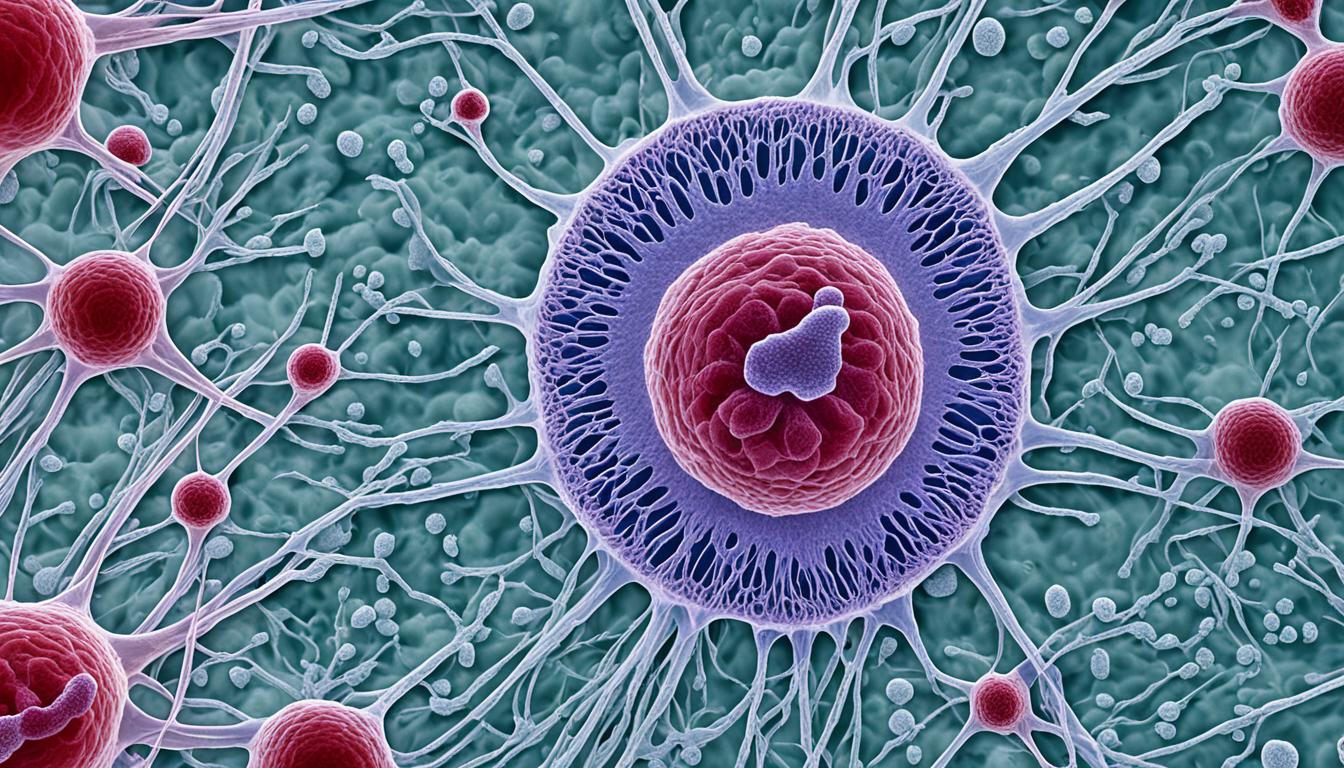Candidiasis happens when a yeast called Candida grows too much. It can affect various body parts, including the vagina. Vaginal candidiasis, or a yeast infection, can lead to uncomfortable symptoms. It can make daily life hard for many women.
Symptoms include itching or soreness in the vagina, pain during sex or peeing, unusual discharge, and sometimes redness and swelling. These problems can really affect someone’s life. It’s key to see a doctor if you notice these signs.
Many things can make vaginal candidiasis more likely. These include being pregnant, using certain types of birth control, having diabetes, a weak immune system, or having taken antibiotics recently. These create a perfect environment for Candida to grow too much and cause an infection.
Doctors usually diagnose it by looking at a vaginal discharge sample under a microscope. This lets them see if there’s a Candida overgrowth. Treatment often involves using antifungal drugs. These can be put directly in the vagina or taken by mouth.
Stem cell therapy is a new hope for treating vaginal candidiasis. It works by using stem cells that can repair damaged tissues. This helps bring back health to the vagina. The therapy also boosts the immune system to better fight off Candida.
Key Takeaways:
- Candidiasis is common and caused by the Candida yeast. It often affects the vagina.
- Symptoms of vaginal candidiasis include itching, soreness, pain during sex, and unusual discharges.
- Risk factors include pregnancy, some birth control, diabetes, weak immunity, and recent antibiotic use.
- Diagnosis is done by checking a vaginal discharge sample under a microscope.
- Treatment usually involves using antifungals directly or by mouth.
- Stem cell therapy shows promise in treating vaginal candidiasis. It aims to rebalance and boost the body’s defenses against Candida.
Causes and Risk Factors of Vaginal Candidiasis
Vaginal candidiasis is often called a yeast infection. It’s caused by factors that upset the balance in the vagina. When Candida, the yeast that leads to this infection, grows too much, an infection can occur.
- Hormonal contraceptives: Birth control pills, as an example, can help Candida grow. They change the vagina’s usual balance. This makes infections more likely.
- Diabetes: People with diabetes might find they’re more prone to this infection. High blood sugar can make a great home for Candida to grow. This encourages infection.
- Weakened immune system: Those with weaker immune systems, like AIDS or cancer patients, face a higher risk. A weak immune system means the body can’t fight Candida as well.
- Antibiotics: Taking antibiotics recently can also throw off the vagina’s balance. Antibiotics not only kill bad bacteria but also the good ones. This means Candida can overgrow.
- Candida albicans infection: The Candida strain Candida albicans is often the cause. It usually doesn’t harm us, but certain conditions can lead to it causing an infection.
It’s key to know what can lead to vaginal candidiasis. This helps in both prevention and treating the infection. By managing these risk factors, people can lower their chances of getting yeast infections again.
Symptoms and Diagnosis of Vaginal Candidiasis
Vaginal candidiasis, also called a yeast infection, brings various symptoms. These may differ in how bad they are. Knowing these symptoms early is key for the right treatment. Symptoms of vaginal candidiasis are:
- Vaginal itching
- Soreness or irritation in the vaginal area
- Pain or discomfort during sexual intercourse
- Abnormal vaginal discharge
In worse cases, you may see redness, swelling, and even cracks in the vagina.
It’s vital to remember that these signs might look like other infections. So, seeing a doctor for the right diagnosis is important. A healthcare pro needs to check to be sure it’s vaginal candidiasis and start the best treatment.
Doctors usually diagnose it by testing a sample of vaginal discharge. They look at it under a microscope or test it in a lab. This way, they can see if Candida, the yeast causing the infection, is there.
Some women can have Candida without knowing it. This is called asymptomatic vaginal candidiasis. But, it might still need treatment if it could harm health or be passed to a partner.
A correct diagnosis is crucial for handling vaginal candidiasis well. The first step is always to talk to a doctor for the right care.
Stem Cell Therapy for Vaginal Candidiasis in Thailand
Stem cell therapy is changing how we manage vaginal candidiasis. It’s a modern option for those looking for long-term relief. This treatment uses the power of stem cells to help the vagina heal. It aims to bring the body’s ecosystem back into balance, fighting candida overgrowth.
Thailand leads in providing this high-tech therapy base. It attracts people from all over for this life-changing treatment. Skilled healthcare experts in Thailand make sure patients get the best care. Choosing this therapy can lead to a lasting reduction in candidiasis symptoms for many.
This therapy makes fighting vaginal candidiasis easier. It’s not a surgery and boosts the immune system. By working on the source of the problem, stem cell therapy is a new path. It offers a different solution than usual drugs. For many, it means finally getting rid of candida overgrowth for good.

